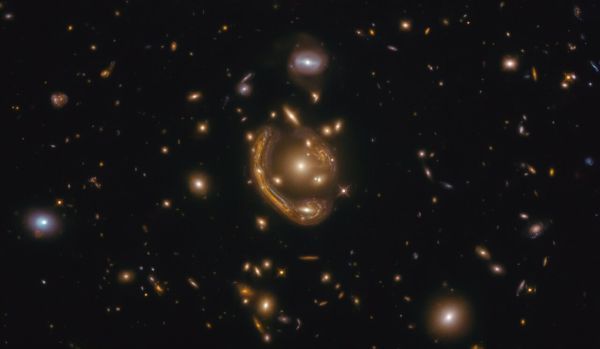Space-Time Distortions Present the Ultimate Test for Einstein’s Theory of Relativity
Observing time distortions could show whether Einstein’s theory of general relativity accounts for the mysteries of dark matter and dark energy.
New Method Offers Prospects for Testing Einstein’s Theory of General Relativity through Time Distortion Measurements
In a recent publication in the journal Nature Astronomy, scientists have presented a novel approach that could potentially serve as a test for Einstein’s theory of general relativity by examining the distortion of time. The proposed method transforms the boundaries of space and time into an expansive cosmic laboratory, aiming to investigate whether general relativity can account for the enigmatic dark matter—an invisible form of matter inferred solely through its gravitational effects on visible matter and energy—and the accelerating expansion of the universe attributed to dark energy. The study authors assert that this method is poised for evaluation in forthcoming surveys of the deep universe.
According to general relativity, gravity emerges as a consequence of mass curving the fabric of space and time, collectively known as space-time. In this framework, Einstein postulated that time elapses more slowly in proximity to massive objects compared to a vacuum without mass. This phenomenon, known as time distortion, constitutes a change in the passage of time.
Since its inception in 1915, general relativity has undergone extensive scrutiny and has emerged as the most accurate description of gravity on immense scales. However, its ability to account for the presence of invisible dark matter and dark energy, which collectively comprise approximately 95% of the energy and matter in the universe, remains uncertain.
Camille Bonvin, the lead author of the study and an associate professor at the University of Geneva, explained that while time distortion predicted by general relativity has been precisely measured at small distances, the proposed method aims to gauge time distortion at significantly larger distances. Bonvin clarified that the technique involves measuring the redshift, which denotes the alteration in the frequency of light emitted by an object as it moves away from the observer. The distinguishing factor lies in measuring the redshift generated when light endeavors to ascend from a gravitational well—an indentation in space-time formed by a massive object.
“This ascent modifies the frequency of the light since time elapses at different rates inside and outside of the gravitational well,” Bonvin stated. “Consequently, the color of the light is changed, manifesting as a shift towards the red end of the spectrum. … By measuring the gravitational redshift, we can obtain a quantification of time distortion.”

Time to test general relativity
The concept of time distortion suggests that time is not universally constant, but instead varies in its passage rates depending on gravitational fields. This idea extends beyond general relativity and finds application in various theories of gravity.
According to Camille Bonvin, “Time distortion exists in all modern theories of gravity,” albeit with different magnitudes across theories. In general relativity, time and space distortions are predicted to be equivalent, while other gravitational theories may not adhere to this principle. Hence, by measuring both time and space distortions and comparing them, physicists can evaluate the validity of general relativity.
Moreover, the team’s newly proposed method holds potential for testing Euler’s formula, a prominent theory used in calculating the motion of galaxies. Specifically, their measurement of time distortion could provide insights into whether dark matter conforms to Euler’s equation, a presumption made in previous studies on time distortion.
This method is expected to be employed in future missions, such as the European Space Agency’s Euclid telescope, scheduled for launch in July, and the Dark Energy Spectroscopic Instrument, currently engaged in a five-year survey of the universe.
Bonvin highlighted the significance, stating, “With the data provided by these surveys, we will have the means to measure time distortion. This is particularly intriguing because it allows us to compare the distortion of time with the distortion of space, evaluating the validity of general relativity. Additionally, we can compare time distortion with galaxy velocities to examine the validity of Euler’s equation. Through a single measurement, we can test two fundamental laws.”
Do not forget to share your opinion with us to provide you with the best posts !



0 Comments